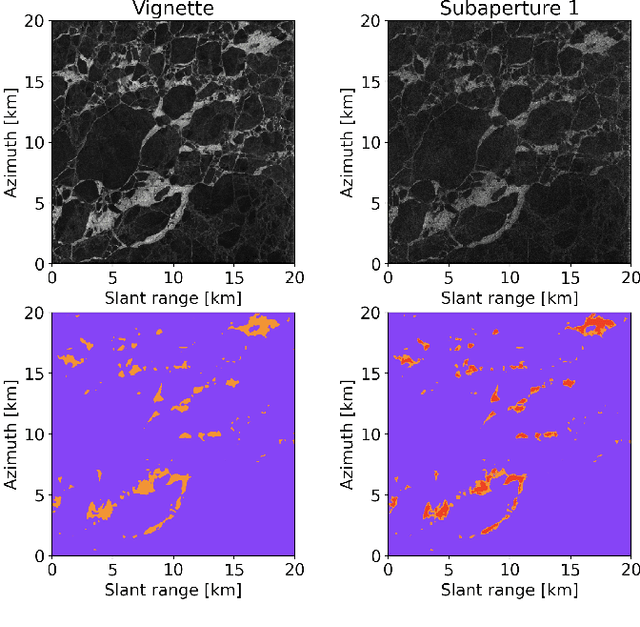Guided deep learning by subaperture decomposition: ocean patterns from SAR imagery
Paper and Code
Apr 09, 2022


Spaceborne synthetic aperture radar can provide meters scale images of the ocean surface roughness day or night in nearly all weather conditions. This makes it a unique asset for many geophysical applications. Sentinel 1 SAR wave mode vignettes have made possible to capture many important oceanic and atmospheric phenomena since 2014. However, considering the amount of data provided, expanding applications requires a strategy to automatically process and extract geophysical parameters. In this study, we propose to apply subaperture decomposition as a preprocessing stage for SAR deep learning models. Our data centring approach surpassed the baseline by 0.7, obtaining state of the art on the TenGeoPSARwv data set. In addition, we empirically showed that subaperture decomposition could bring additional information over the original vignette, by rising the number of clusters for an unsupervised segmentation method. Overall, we encourage the development of data centring approaches, showing that, data preprocessing could bring significant performance improvements over existing deep learning models.
 Add to Chrome
Add to Chrome Add to Firefox
Add to Firefox Add to Edge
Add to Edge